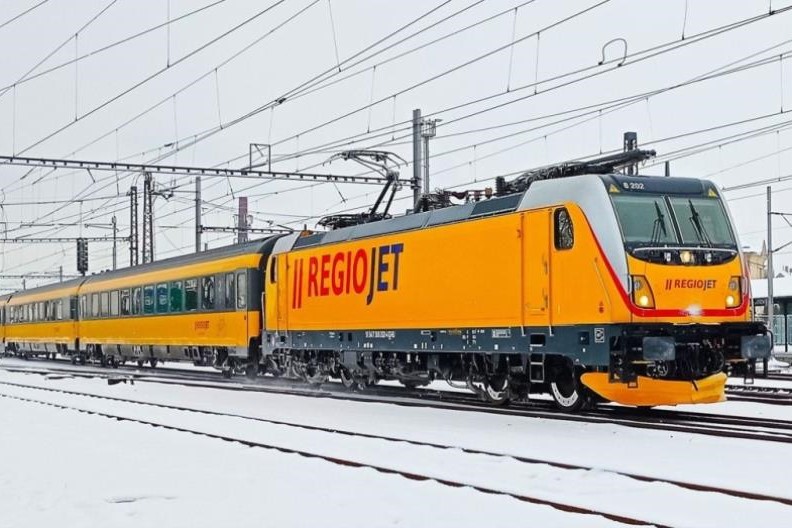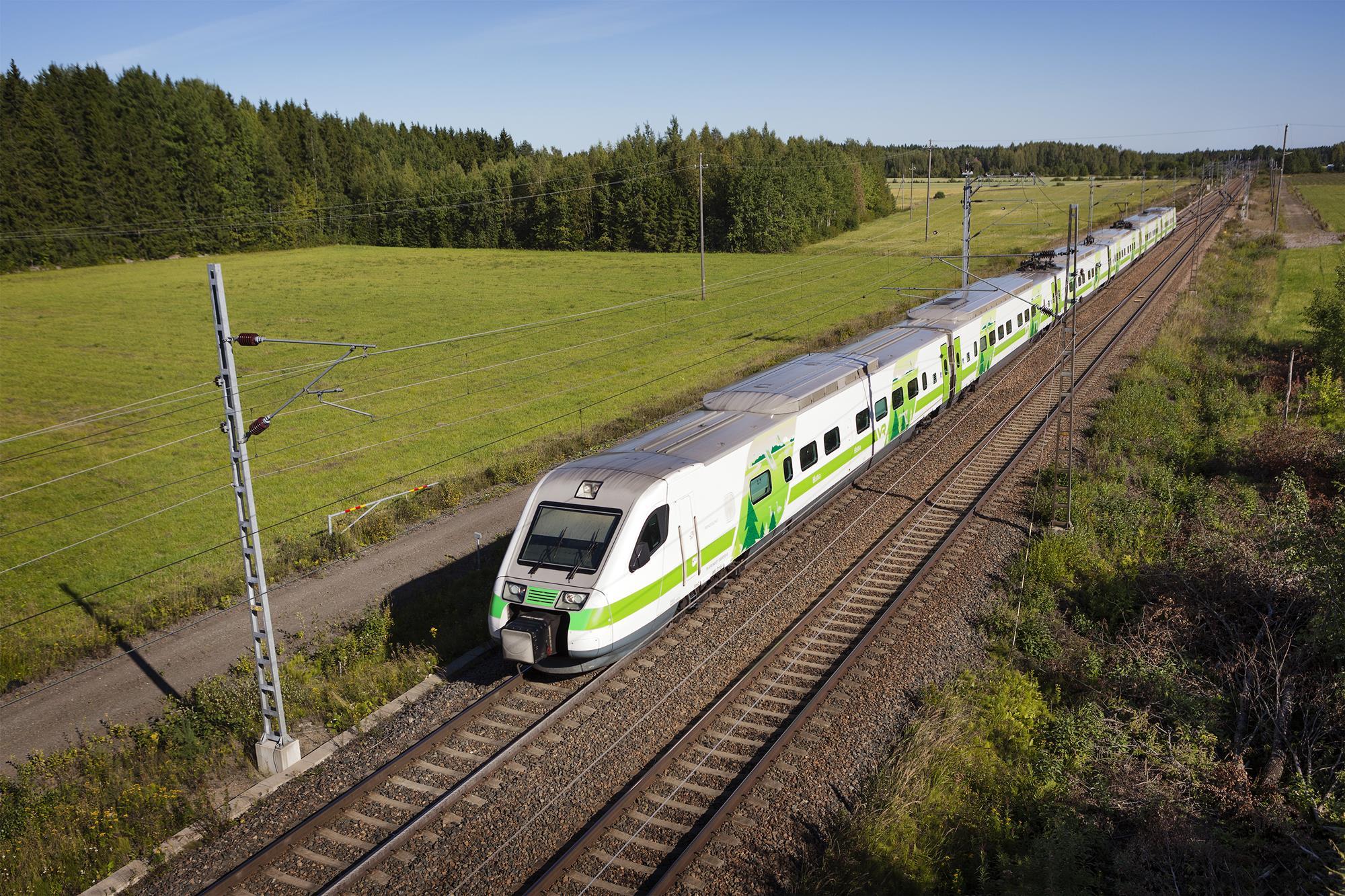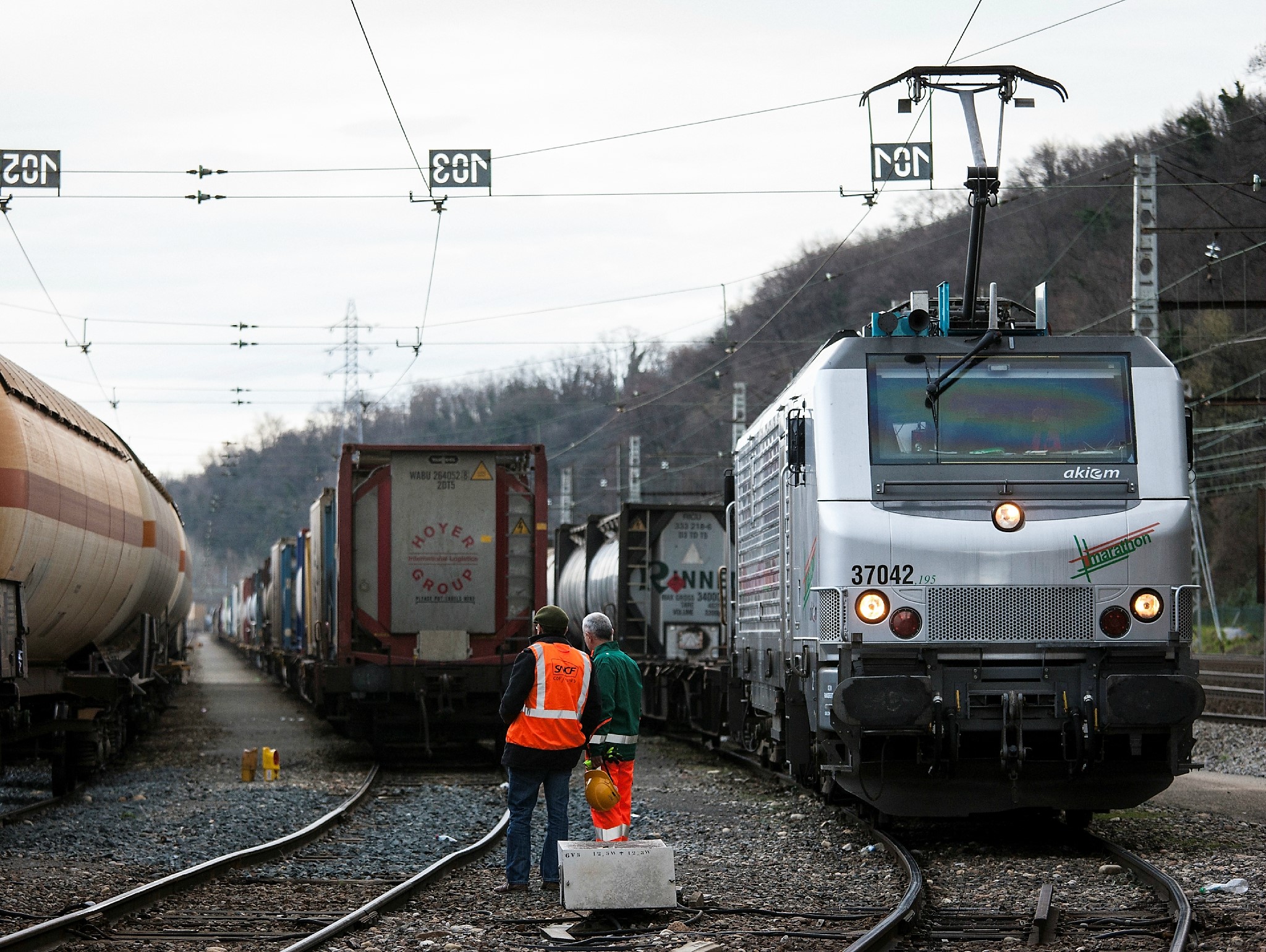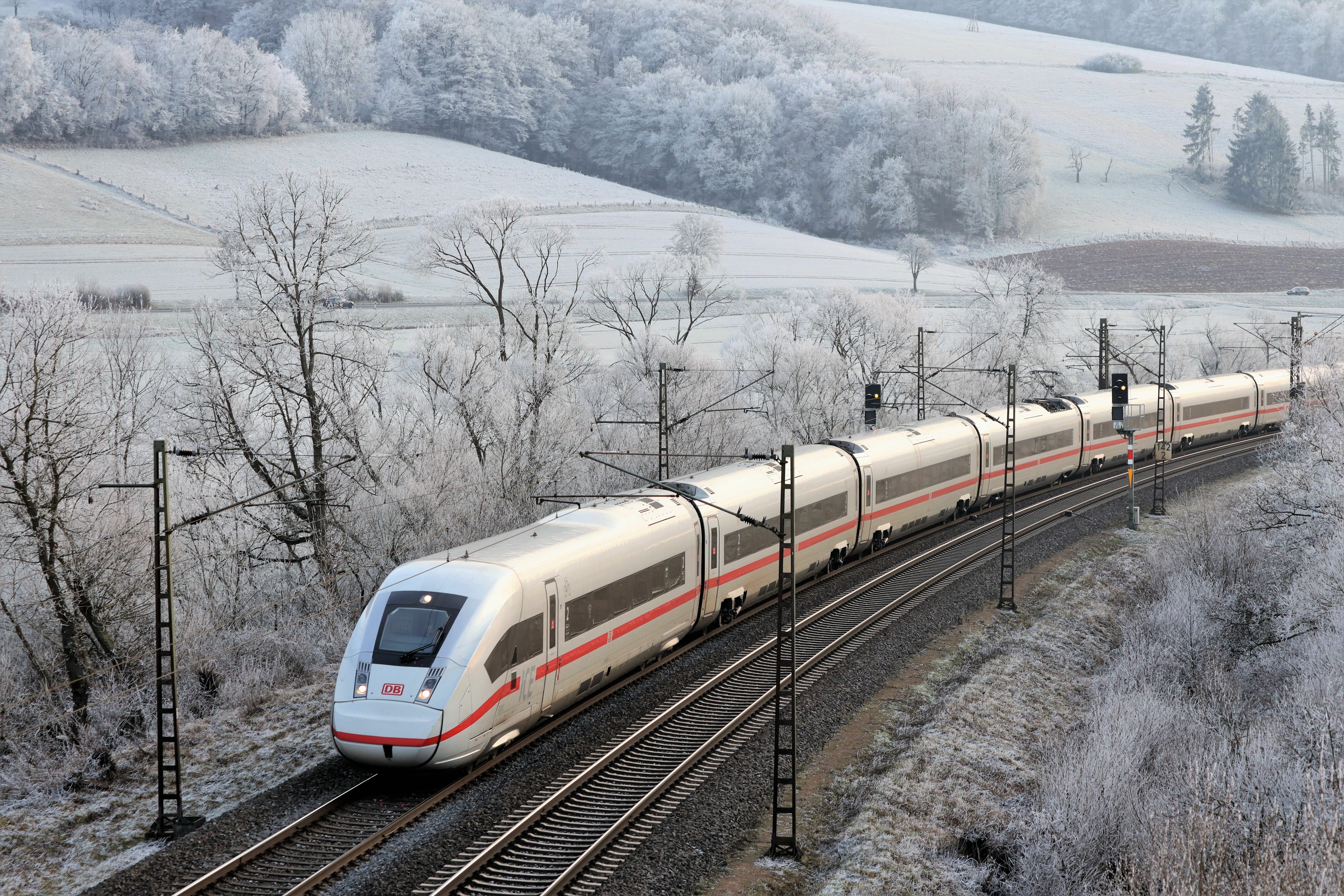29/08/2023 – By Frédéric de Kemmeter – Railway signalling and freelance copywriter – Suscribe my blog
🟧 Back to homepage 🟧 See our brief news 🟧 UK 🟧 China 🟧 Japan 🟧 USA 🟧 the rest of the world
Austria – Baltic States – Czech Republic – Finland – France – Germany – Italy – Netherlands – Norway – Poland – Portugal – Republic of Ireland
– Slovakia – Spain – Sweden – Switzerland – Ukraine
Bombardier’s TRAXX locomotive, now « Universal » at Alstom, remains the best-selling locomotive in Europe. It is the result of a policy of liberalisation that encouraged the industry to provide a locomotive that could be sold throughout Europe, while meeting the specific needs of each operator.
First of all, we need to go back to the circumstances. In the 1990s, the railways were at a crossroads. On the one hand, the advent of liberalisation promised the emergence of new players, which meant new markets for an industry in full contraction. On the other, the traction fleet of most of the incumbent companies was ageing and equipped with increasingly obsolete technology. Replacement was needed throughout Europe, to varying degrees, but one question haunted rolling stock managers: should the technologies of the 70s and 80s be repeated – and improved – or should new traction technologies be introduced? (1)
Technology and power evolution

One of the reasons for the success of the TRAXX locomotive (as well as Siemens’ Vectron and Alstom’s Prima) is the major development of the traction chain over the period 1990-2000. The introduction of three-phase motor traction for locomotives and multiple units in Europe considerably changed the philosophy behind the construction of similar vehicles.
While traction was still based on direct current motors (notably also on the TGV PSE – picture to right -, and the first Eurostar TMST), the technology of the 2000s confirmed the use of three-phase motors for good, whatever the current tapped and the voltage received, direct or alternating (2), and whatever the train used (locomotive, multiple unit, high-speed trainset).

First of all, there has been a great evolution about traction current processing, made possible economically by the proliferation of silicon semi-conductors from the 1970s onwards, which has considerably simplified the construction of the electrical part of locomotives. It is now possible to use 1 or 2 types of motor (depending on the power required), whether the catenary is supplied with DC or AC voltage. In the case of AC voltage, the current is first converted to DC on board after an initial voltage reduction by a transformer (for example from 15 or 25 kV to 1-2 kV), then this current is converted by inverters into three-phase voltage, which then supplies the locomotive’s 4 traction motors (one motor per axle).
Then there is a development concerning traction power. As the specific power of the asynchronous or synchronous motor is much greater than that of the DC motor (generally 1.4 to 1.6 MW compared with 0.7 to 1.0 MW), it has been possible (while maintaining the vehicle’s power) to install not six, but four traction motors, which could reduce maintenance costs for the same or even more power.
There has been great progress in mastering the processing of traction current. And power levels are increasing with the asynchronous motor.
This is a far away from the construction of 6-axle locomotives (which cause more wear and tear on the track), which used to be the solution provided to operators in Europe to increase speed or haul heavy freight. Let’s remember the SNCF’s Class CC6500 or 40100, the SNCB’s Class 1800 or the DB’s Class BR101 and 151, to name but a few examples.
Today’s typical locomotive has 4 axles, and the power of the 4 three-phase motors means that heavier freight trains can be run. Today’s locomotives have an AC power rating of 5-6 MW, compared with 3-4 MW in the past (depending on the engine, of course). It should be added, however, that 6-axle locomotives continue to be built, but only in justified circumstances.
The beginnings of TRAXX
Bombardier in Europe is also a response to the circumstances of the 90s. In 1991, DB issued a call for tenders for around 1,000 universal locomotives with improved design and increased power. This invitation to tender was cancelled in 1993 due to the high price of the bids and changes in the geo-economic situation.
In 1994, Deutsche Bundesbahn merged with its eastern sister, the former East German Deutsche Reichsbahn, to create Deutsche Bahn. This merger coincided with a far-reaching reform of the German railways. This reform saw the demise of the former Rolling Stock Division and the division of the fleet into three distinct business sectors: regional, mainline and freight. This policy rendered obsolete the very idea of the universal locomotive. The newly-created business sectors then launched new invitations to tender for electric locomotives adapted to their specific needs.
In November 1994, Deutsche Bahn chose ABB and AEG for two separate orders: ABB was to supply 145 express locomotives, the BR 101, for DB Fernverkehr. AEG was to supply DB Cargo with 80 BR 145 locomotives for medium-tonnage goods trains.



ABB had developed its modular electric locomotive, named Eco2000, well known in Switzerland with the Re460s purchased by SBB. ABB’s concept included a version of its Flexifloat family of high-speed bogies with a wheelbase of 2,650 mm, inverters with GTO thyristors cooled with biodegradable ester and a main transformer also cooled with ester, which can be considered the origin of the inverters and transformer of the first generation of TRAXX locomotives.
In 1994, AEG delivered a prototype locomotive called the 12X. This locomotive had a modular design, making it possible to produce different versions, which was the very basis for competing for tenders in Deutsche Bahn’s business sectors. AEG’s 12X served as a test bed for new technologies, becoming in 1997 the world’s first locomotive equipped with IGBT-based converters and testing MITRAC traction control electronics from 1998.
It is clearly ABB’s traction chain that has taken its place in the 12X, albeit without the more expensive components. Working together under ADtranz, the two manufacturers supplied the BR 101 and BR 145 to DB as agreed. A regional passenger version of the BR 145 was also designed and delivered as the BR 146.
But all this concerned only 15kV alternating current. In the meantime, ABB had received a large order from the Italian FS group, for a regional 3kV DC locomotive, the Class E464. An exotic detail? Not really. We’ll see why below.
The arrival of Bombardier

The turbulent 90s were not all about technology. In the vast redistribution of railway construction plants, Canada’s Bombardier arrived in Europe and began its shopping spree in Belgium with the purchase of BN (Brugeoise & Nivelles) in 1988, followed by ANF-Industrie in France in 1989. This was followed by Waggonfabrik Talbot GmbH in 1995 (Aachen), Deutsche Waggonbau AG and then DWA (Berlin) in 1998. But the biggest coup came in 2001, with the acquisition of ADtranz, a merger of the transport divisions of ABB-Henschel, AEG and Daimler-Benz.
In the 1990s, Canada’s Bombardier arrived in Europe and began its shopping spree by buying up a number of industries, including ADtranz, its biggest coup.
Bombardier therefore found itself with AEG’s Class BR145 and Class BR146, ABB’s Class BR 101 and also… ABB’s Class E464 in Italy. In other words, with feedback from the two voltages available throughout Europe: AC and DC. This proved crucial for the future…
ABB had in the meantime received a new order from DB, this time for goods trains, the Class BR 185. This locomotive was mainly developed after the takeover of ADtranz, and can therefore be considered as the mother of a new platform called « TRAXX« .
The TRAXX brand was introduced in September 2003 with the delivery of the Class BR185 to DB. The acronym stands for Transnational Railway Applications with eXtreme fleXibility. The Canadian company’s guiding principle is to take advantage of the opportunities offered by European policy before anyone else: to satisfy the needs of new players and to respond to major public orders throughout Europe with reduced design costs.
In the new sales system, the purely German designation « BR 185 » and its sisters became TRAXX F140 AC, while the BR146.1 (passenger) became TRAXX P160 AC: F for « Freight » and P for « Passenger », the numbers indicate the speed, AC and DC indicate the voltage.
Plateform TRAXX 2 (E186)

Reducing design costs and exceeding expectations. Bombardier’s idea was to combine AC and DC voltage technologies in a single locomotive, something that the incumbent companies were not interested in at the time, many not seeing the point of an international engine! Bombardier did it. A locomotive that was originally purely German and (partly) Swiss and Italian became a formidable and ultimately successful sales weapon.
In 2004, the basic design underwent a major overhaul: the body and fronts were redesigned to meet crashworthiness standards, while the GTO thyristor inverters were replaced by IGBT inverters. The coolant for the inverters and main transformer was changed from ester to water.
The option of individual axle control instead of individual bogie control was also introduced. The bogie frame was reinforced to allow axle loads to be increased to 22 tonnes.
Although the components are sourced from a number of different locations, final assembly only takes place at the Kassel plant in Germany (for the multi-voltage version) and at Vado Ligure (for the DC variant).
Bombardier continued to deliver 82 Class BR146 machines for DB Regio’s regional traffic and 27 machines for DB Fernverkehr’s main lines. These were delivered under the TRAXX 2 range, while remaining AC under 15kV. Similarly, DB Cargo took delivery of 409 Class BR185 machines, one of DB’s largest TRAXX fleets, only AC but dual-current 15kV – 25kV. The E186 platform was now well underway.
The TRAXX’s body design and internal configuration were further modified in 2006, when the first diesel-electric version was built.
There are two separate series to consider:
- Dual voltage » systems, which operate only at 15kV and 25kV AC voltages. They are represented by the TRAXX F140 AC, P140 AC, P160 AC and others;
- The « MS », multi services, or rather F140 MS, known in Germany as the BR186, are considered to be the second generation of Traxx 2s. They run with four currents AC and DC, and weigh 1 tonne more than their « Dual » sisters. Apart from the different pantographs and equipment for DC operation, the F140 MS types are identical to the « Dual voltage » versions.
The F140 MS really internationalised Bombardier’s traction market and enabled it to expand into the « DC current » countries of Benelux, Italy, Poland and part of France. It enabled finally Bombardier to reach every country in Europe.
The F140 MS has truly internationalise Bombardier’s traction market. Surveys of potential customers had revealed a demand for the installation of safety packs for 4 or 5 countries in the same locomotive, in the absence of ETCS. Moreover, these packs also had to be able to be upgraded, added to or modified at reasonable cost, as the locomotives could be transferred from one operator to another at little cost. It was never before seen in the railway sector.
Let’s say it: it was leasing companies that were primarily interested in this solution, rather than incumbents. Three series of security packs including countries where the market was dynamic had been identified:
- Germany, Austria, Switzerland, Italy (DACHI) ;
- Germany, Austria, Belgium, Netherlands (DABNL) ;
- Germany, Austria, Poland (DAPL).
This international but « technically regionalised » production enabled the market to be extended to the « direct current » countries, Benelux, Italy, Poland and finally France. This enabled Bombardier to reach all European countries, including Scandinavia. It is at this stage that we can measure the success of this locomotive.

PKP Cargo, for example, designated them Class EU43. The units bought by Alpha Trains and leased to SNCB (and the now-defunct B-Cargo) were given the Class 28 and 29. In Spain, Renfe classified them as Class 253. Many other operators and leasing companies began to acquire large numbers of these TRAXXs.
In 2018, some – admittedly contradictory – figures indicated that there were almost 2,300 TRAXX in service, but we don’t know if we should also count the very first BR145, BR146 and the 700 Italian E464 machines, considered as « pre-TRAXX »…
The fact remains that the E186 ‘MS’ locomotive, or simply E186, has become the very icon of rail liberalisation, and can even be found in the Fret SNCF fleet for its services to Antwerp and Liège in Belgium. And it is also the official machine of ECR in France, as well as dozens of other operators throughout Europe. The E186s now run from Palermo to Oslo and from Malaga to Warsaw.
Plateform TRAXX 3

On 4 July 2018, the first TRAXX MS3 locomotive was officially unveiled at the Kassel plant in front of more than 100 representatives of rail operators. This TRAXX 3 family was offered in AC, DC and multi-system variants. To mark the occasion, the front faces were given a new, slightly more rounded design.
Bombardier stated at this time that this four-current TRAXX MS3 was the only multi-system locomotive on the market with a last-mile diesel engine. This is a key advantage that enables the last few kilometres to be covered without catenaries to reach the customer’s facilities without having to use the famous « shunting locos »…
This TRAXX MS3 was ordered directly by TX Logistik (FS group) in 40 units with an option for a further 25, while Akiem had already ordered 10. Its success has been undiminished since then, with recent orders coming one after the other, especially after the pandemic…
Did the competitors miss something?
But what was happening at the other manufacturers who, like Bombardier, had done their shopping in Europe by creating a significant portfolio of factories and specialised rolling stock platforms?

Siemens, very busy with its orders for DB and ÖBB (Taurus), attempted a comeback between 2003 and 2006, with its ‘international’ BR 189, which was not a great success (photo, Roosendaal in the Netherlands). Like Bombardier, the large Munich-based firm grouped its studies on a single platform called Eurosprinter, which eventually produced the SNCB 18 and 19 series (120 machines), the first truly international DC current’s project. Belgium provided Siemens with vital feedback that enabled it to create the Vectron platform in 2010, which really got Siemens’ sales in Europe off the ground. Like the TRAXX, the Vectron can be four-current and is designed to respond to all possible calls for tender throughout Europe. To date, the Vectron has just over 1,600 firm orders in more than 20 countries…

For its part, Alstom also tried to make its mark in Europe. First came the laborious development of the BB 36000, which Alstom wanted to be « universal » but which SNCF didn’t know what to do with. In any case, the machine was not designed for the right bank of the Rhine…
Then came the Prima period. Unfortunately, the Prima I had such a « SNCF » design that it was hardly saleable as it stood. It needed a more « European-compatible » design (3). Alstom tried to put things right by bringing out the Prima II in June 2009, but it was too late. The 2008 financial crisis, freight corridors that were not yet so well developed, a lack of market and a fall in traffic all meant that the Prima II became a locomotive for overseas operations outside Europe.
The takeover of Bombardier in 2021 by the French company will therefore enable it to return to a market that has been missed. Alstom has changed the name TRAXX to Universal. However, it will be difficult to remove its clear German origins, as there are so many examples in service throughout Europe.
But it’s an undeniable fact: this locomotive proves that with a good industrial process, you can go far, very far. 🟧
(1) The same kind of question arose in the 1950s about whether steam traction should be maintained…
(2) This is one of the reasons why unfortunatelythis rolling stoch is scrapping, because they are still powered by the old DC motors. Spare parts are becoming scarcer, and the idea – frequently taken up in the media – of launching second-hand TGVs ignores the problem of rising maintenance costs.
(3) Some sixty BB 37000s are nevertheless authorised to Basel-Muttenz and in Germany, on behalf of Captrain (source Le Train special n°103 p67).

Related topics:
 Railways: to develop leasing for support new entrants’ projects
Railways: to develop leasing for support new entrants’ projects
01/03/2023 – The availability of rolling stock is a stumbling block to the ambitions of new operators to launch new open access services, with high investment costs for new vehicles and a limited second-hand market. This is not a new observation. The second-hand market is unevenly distributed across Europe and approval…
 The European rail network? A real patchwork of technologies…
The European rail network? A real patchwork of technologies…
02/11/2022 – If you think that railways are just about politics and finance, then you’re in for a real treat. Because railway infrastructure is above all national technology, which is an obstacle to standardisation and the European dream of trains without borders. We will explain all this to you very briefly.
 The optimal length of freight trains
The optimal length of freight trains
29/03/2022 – One of the keys to improving rail freight volumes would be to increase train lengths further. This idea is widespread elsewhere in the world, but in Europe it can only be undertaken under certain technical conditions.
 Is the Single European Rail Area unachievable dream?
Is the Single European Rail Area unachievable dream?
06/03/2022 – We repeat here a headline that appeared in February 2022 in the excellent monthly International Railway Journal. It asked whether the dream of a unified railway could ever be achieved in Europe. A good question which calls many answers.
29/08/2023 – By Frédéric de Kemmeter – Railway signalling – Suscribe my blog

